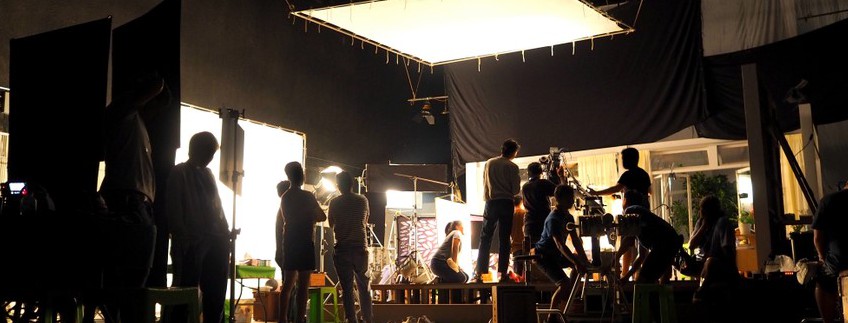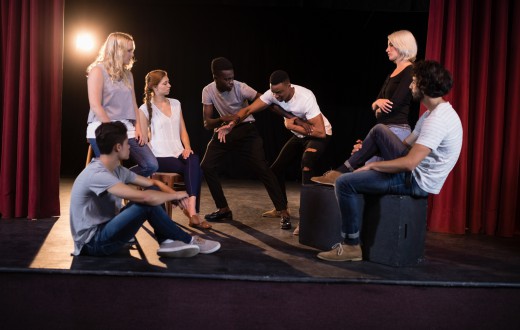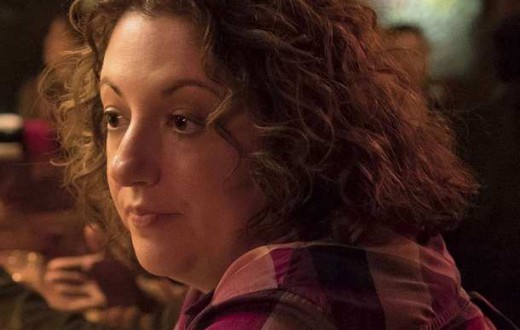So you just got cast in your first professional production. Congratulations!
Beyond the excitement and anticipation, for many first-time professional actors, stepping onto set can be a little intimidating. They don’t quite know where to go, or what to expect, and that nervousness can cause them to need more time to get fully into the groove and prevents them from really letting their acting talents shine.
What’s more, there’s a ton of terminology being thrown around on set that can get downright puzzling sometimes. Here then is a quickie guide for newbies – and old hands as well – because hey, it’s possible to spend quite a bit of time on set and never really know what certain terms mean!
- Call Time
This is the first thing you’ll need to know and almost certainly one of the most important. Your call time is the start of your work day, which you will be assigned at least the day before shooting. It indicates when you are to report to set and be ready to go to work. If you want to be a successful actor on any level, reporting to set promptly for your call time is absolutely vital!
- MOW
Another important term to know the day before the shoot, because this stands for “make own way” to set. They will usually mention arrangements for the transportation crew to pick you up if that’s going to be the case, but be sure to clarify if you’re being driven or MOW as you don’t want to be late!
- AD (1st AD, 2nd AD…)
This is the abbreviation for the assistant director,who will likely be the person who is working most closely with you and the director on set in terms of your performance. You’ll often find that the director will say hi when you come to shoot a scene, and occasionally he or she will have a note for you, but the bulk of your direction will come via the AD. A good name to remember when you meet him or her!
- PA
Production assistant. Oftentimes it is a production assistant (or sometimes a 2nd or 3rd AD on smaller productions) who will be your liaison on set and the person in charge of wrangling the actors. This will usually be the person who you report to at your call time, and who will guide you to where you are needed at various times during the shooting day.
- Second Team
The second team is the people who take the place of the principal actors while camera angles, lighting and other technical issues needed in a shot are being sorted out. They are stand-ins, body doubles, stunt doubles, etc. who go through the motions of the scene in rehearsals to hammer out exactly what needs to happen when the principals are called to set.
- Back to One
What’s with all these numbers? Are we actors or mathematicians?? No, this is a term you’ll often hear right after you hear the word “Cut!” That’s because it refers to telling the actors and crew that there’s going to be another take, and that they should return to their first position in the scene and prepare to run it again. It’s important for the professional actor to take responsibility for getting him or herself positioned exactly where they were at the top of the scene, and being ready to make any needed adjustments for the next take.
- Background
These are the actors who were once called “extras.” If you are hired to be part of a crowd scene or in some other non-speaking role, you are working as a background actor.
- Bump
No, it’s not a fist bump you get from the director or a principal actor after a particularly good take, although those are nice too. Rather, it refers to the bump in pay you get if you get asked to do a speaking part after having been hired as a background actor. Be sure to talk with the AD about this right away if you’re asked to say lines and you were only hired as background.
- Blocking
Don’t worry, you aren’t being told you’re in the way of the camera if someone refers to “blocking.” If you’ve done theater you’ll likely know this one, as it refers to the choreography of the scene, who stands where, and where they go during the scene. You’ll usually be given your blocking immediately before shooting a scene, while the camera set up is taking place.
- Cross
Another familiar theater term referring to moving from one place to another during the shot. You’ll be asked to “cross” from point A to point B at a certain moment in the dialogue or action.
- Tafted
To be Tafted or Taft-Hartleyed refers to the Taft-Hartley Act of 1947 that regulates union activity for actors. It means an actor has qualified to join the Screen Actors Guild by either getting a bump to a speaking role, or by getting three SAG background vouchers. Here’s more info on SAG-AFTRA.
- Basecamp
This is the home base area of the shoot, where you’ll usually find hair and makeup, the actor holding area, crew hang out spot, check-in, equipment, and more.
- Video Village
Video village refers to the area where you’ll see a variety of monitors and other equipment set up and it’s where you’ll usually find the director watching the shoot and communicating with the AD via walkie talkie. If you’re on a commercial shoot, the ad agency and client often have a separate video village set up from which they monitor the shoot’s progress.
- Craft Services
No, this isn’t a place where you get to do pottery and make macaroni art between takes. But craft services is nonetheless a favorite hangout for cast and crew alike, as it refers to the catering and other food and drink provided on set. With time to kill it’s a great place to not only grab a bite, but also to meet your fellow actors!
- Wrap
Not a sandwich, but almost as good: “wrap” is an indication that something is completed shooting, whether it be the scene, the day, the entire production shoot, or just an individual actor’s day. Make sure you check in with your PA or 2nd AD to be certain you’re wrapped before you take off for the day!
BONUS Term! – Action! – Camera starts rolling and the scene begins!







